30+ I Am from Poem Examples to Download
Poetry has long been a powerful medium for expressing emotions, ideas, and personal experiences. One unique form of self-expression is the “I Am From” poem, which offers a glimpse into the poet’s past, memories, and identity. In this article, we will delve into the world of “I Am From” poems, understanding their definition, learning how to craft one step by step, addressing common questions, and discovering their significance as a literary device.
1. I Am from Poem Example
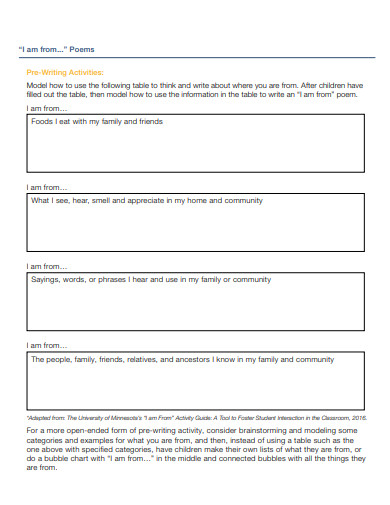
cli.org
2. Blank I Am from Poem

wsuu.org
3. Where I Am from Poem Example
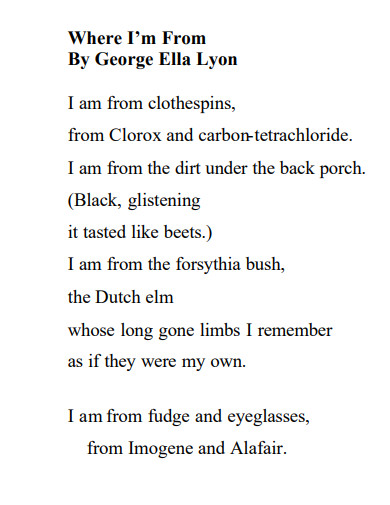
smithsonianeducation.org
4. Writing I Am from Poem Example
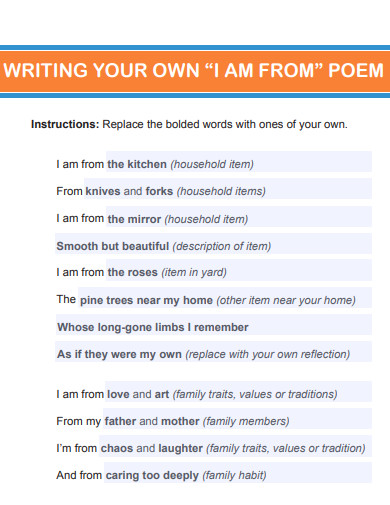
assets.ltkcontent.com
5. I Am from Poem Template
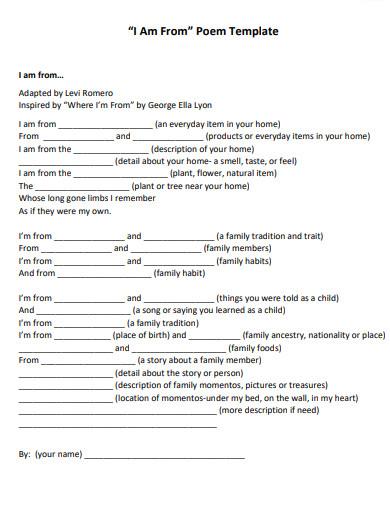
inclusioninstitute.fpg.unc.edu
6. I Am from Poem Organizer Example

d17j94wz7065tl.cloudfront.net
7. I Am from Poem Own Example
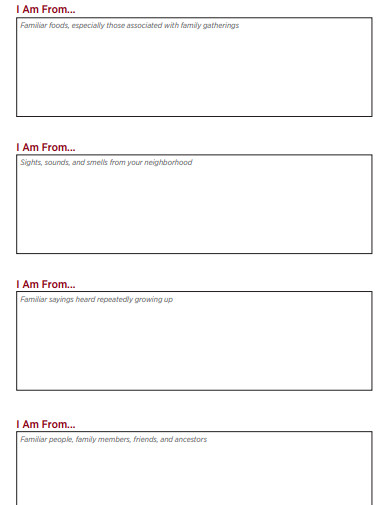
etsu.edu
8. I Am from Poem Family Example
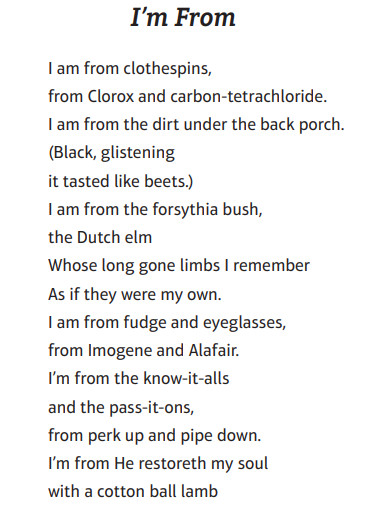
scholastic.com
9. I Am from Poem Exercise Example
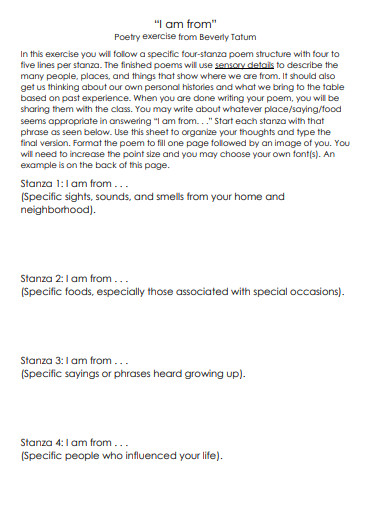
johnsonclasswebsite.weebly.com
10. English I Am from Poem Example
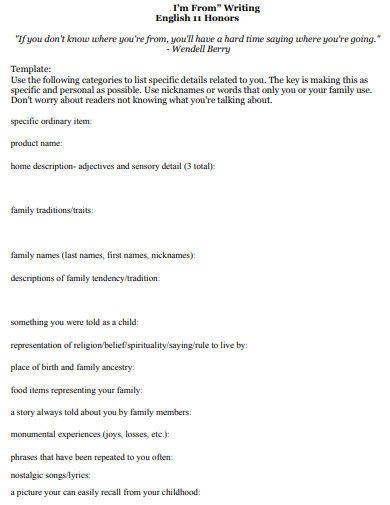
henninghomepage.weebly.com
11. Teacher I Am from Poem Example
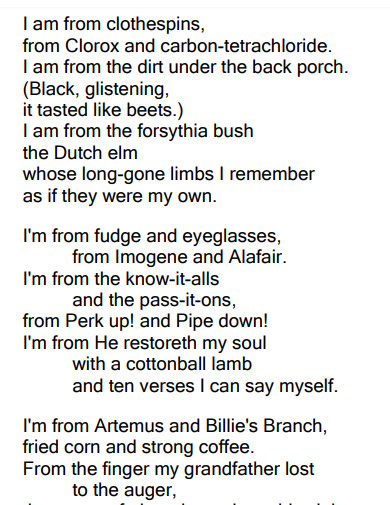
otterbein.edu
12. Sample I Am from Poem Example
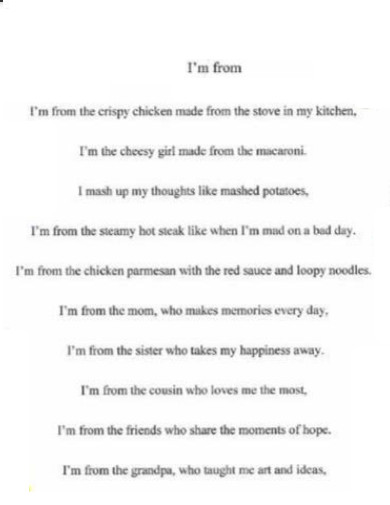
education.ne.gov
13. Students I Am from Poem Example
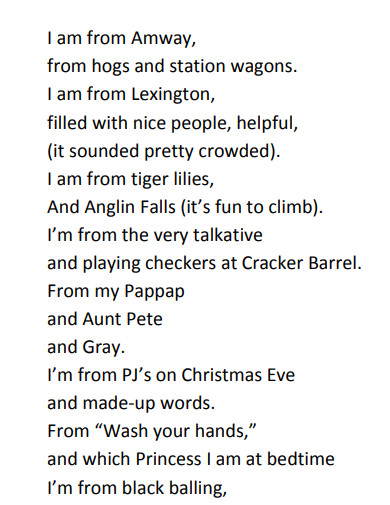
artscouncil.ky.gov
14. Simple I Am from Poem Example
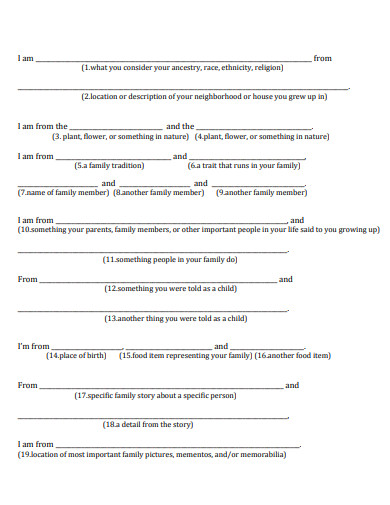
portal.ct.gov
15. Prewriting I Am from Poem Example
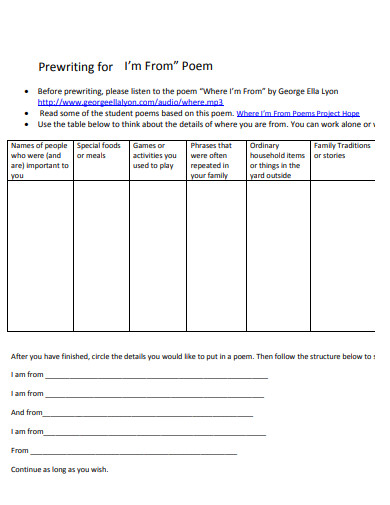
nelrc.org
16. I Am from Emulation Poem Example

iel.org
17. I Am from Poem Fillable Example
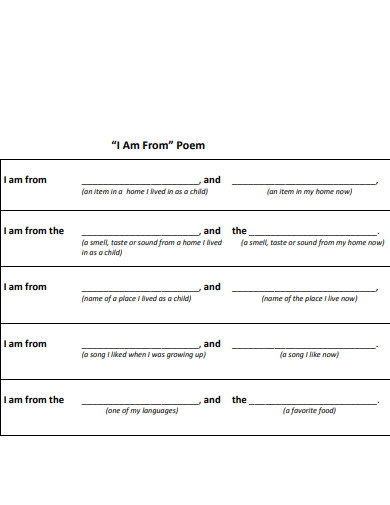
nysmigrant.org
18. 6th Grade I Am from Poem Example
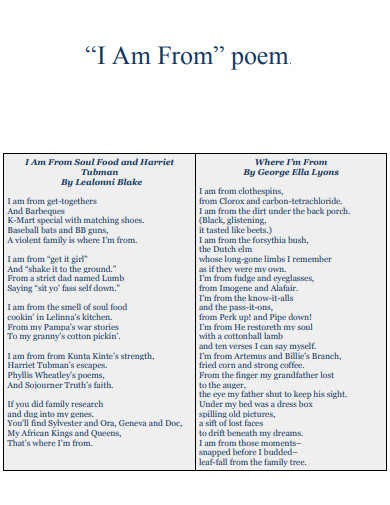
fcusd.org
19. Original I Am from Poem Example
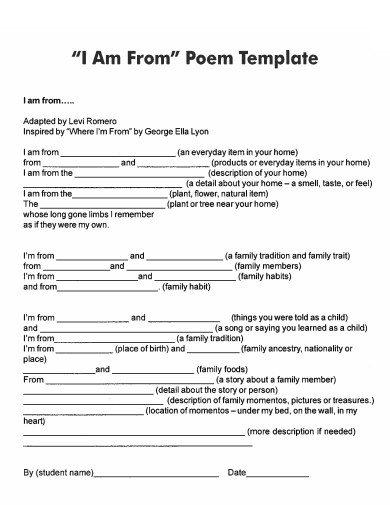
lausd.org
20. I Am from Poem from School Example
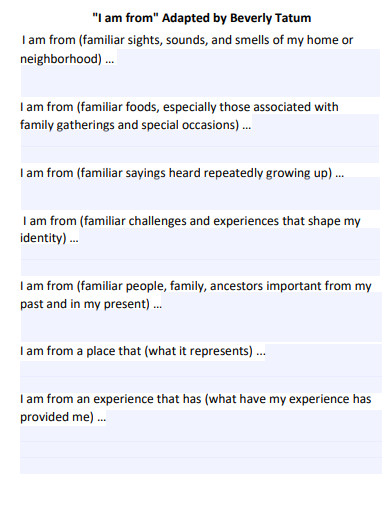
engineering.unm.edu
21. I Am from Poem Assignment Example
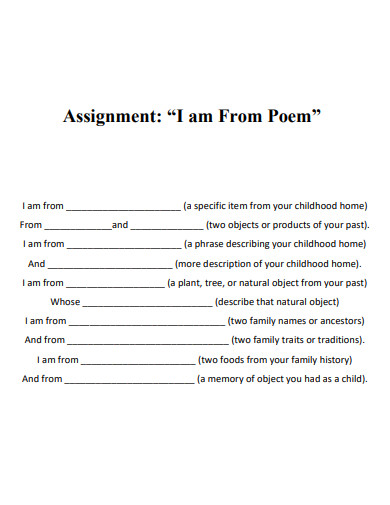
nfschools.net
22. Family I Am from Poem

hrc-prod-requests.s3-us-west-2.amazonaws.com
23. Beautiful I Am from Poem
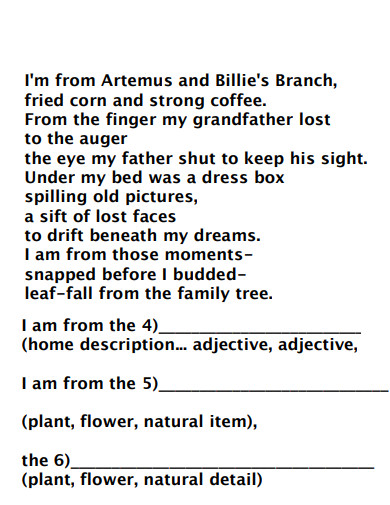
econedlink.org
24. Third Grade I Am from Poem Example

waltonhigh.typepad.com
25. Project I Am from Poem Example
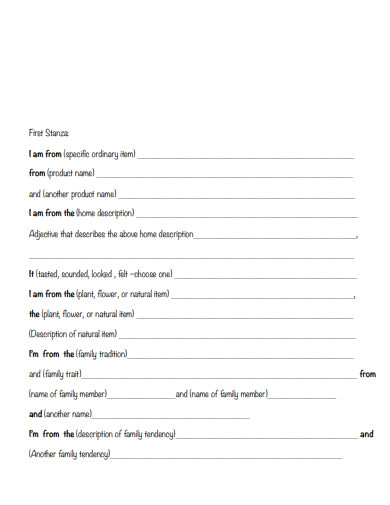
cdnsm5-ss8.sharpschool.com
26. I Am from Poem Describes Example
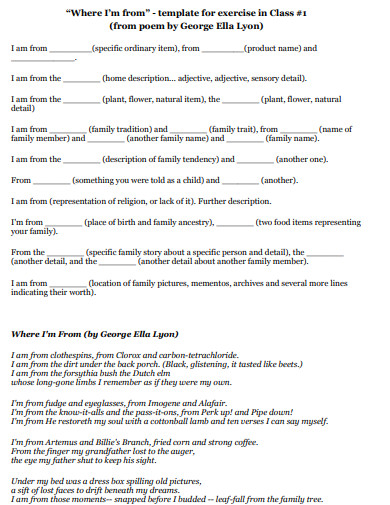
rebekahjbuchanan.com
27. Country I Am from Poem Example
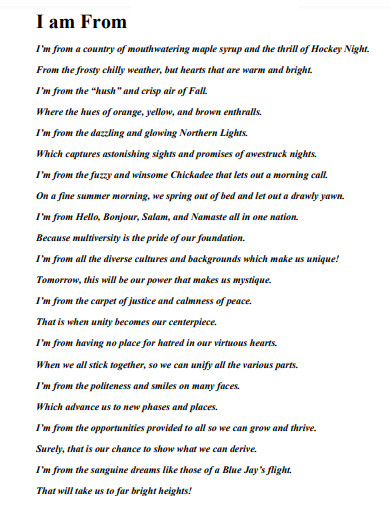
heritagesask.ca
28. Persona I Am from Poem Example
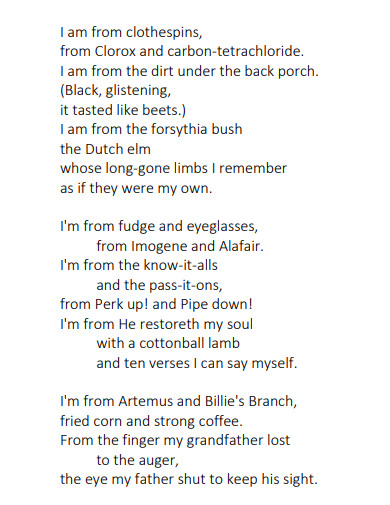
cusd80.com
29. I Am from Unique Poem Example
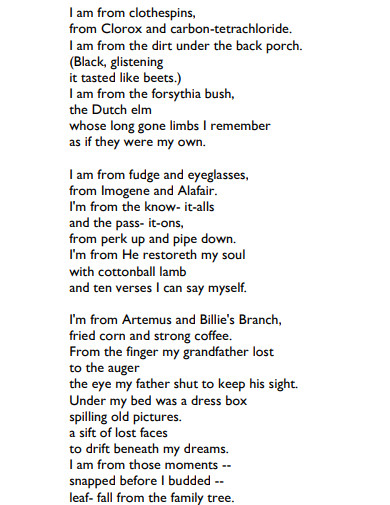
sanjuan.edu
30. High School I Am from Poem Example

pmdalliance.org
31. Calvin I Am from Poem Example
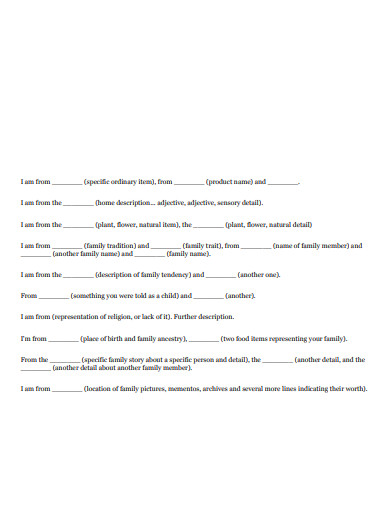
mseffie.com
What is an I Am From Poem?
The “I Am From” poem is a genre of poetry that provides readers with insights into the poet’s origin, background, and identity. Unlike traditional poems that often follow a specific structure and rhyme scheme, the “I Am From” poem focuses on conveying emotions, memories, and personal connections to various aspects of the poet’s life. It doesn’t adhere to a specific tone, theme, or stanza arrangement; instead, it’s a heartfelt reflection on one’s unique journey.
How to Write an “I Am From” Poem
Creating an “I Am From” poem can be both therapeutic and creative. It allows you to explore your past, values, and experiences in a way that resonates with your readers. To guide you through the process, here’s a step-by-step approach to crafting your own “I Am From” poem.
Step 1: Reflect on Your Identity and Roots
Begin by reflecting on your background, memories, and the elements that have shaped your identity. Consider the people, places, traditions, and experiences that hold special meaning to you. Jot down notes or keywords that come to mind.
Step 2: Choose Literary Devices and Elements
Select literary devices and elements that will enhance the impact of your poem. Elements such as alliteration, metaphors, and varied stanza lengths can add depth and texture to your writing. These tools help convey emotions and experiences in a nuanced manner, engaging readers on multiple levels.
Step 3: Capture Evocative Details
Incorporate evocative details into your poem. Use sensory language to describe sights, sounds, scents, and feelings associated with your memories. This adds depth and authenticity to your poem, allowing readers to connect with your experiences.
Step 4: Embrace Literary Devices
Enhance your poem with literary devices such as metaphors, alliteration, and imagery. These elements add layers of meaning and vividness to your words, making your poem more engaging. For example, you might compare a significant place to a metaphor that encapsulates its importance.
Step 5: Organize Your Thoughts
Structure your poem with stanzas or sections that flow logically. You might organize your poem chronologically, thematically, or even experiment with a more free-form structure. Consider how each stanza contributes to the overall narrative you’re creating.
FAQs
Can I use clichés in my “I Am From” poem?
While it’s best to avoid clichés, if a particular cliché holds personal significance, you can reinterpret it in a unique way that reflects your individuality.
How do I establish the right tone for my poem?
The tone of your poem depends on your memories and emotions. Consider the feelings you want to evoke—whether nostalgic, contemplative, or celebratory—and craft your language accordingly.
Can I include elements from my current context, not just my past?
Absolutely! Incorporating present elements and context that connect to your past can add layers of depth and highlight your growth and evolution over time.
“I Am From” poems are windows into the soul, offering readers a glimpse into the rich tapestry of experiences that shape us. Crafting one is an intimate process that blends personal history with artistic expression, allowing us to celebrate our uniqueness. By following the steps outlined in this guide, you can create a poem that not only speaks to your identity but resonates with others who share in the human experience. So, take a journey into your memories, embrace your creativity, and let your “I Am From” poem be a testament to the beauty of individuality.


